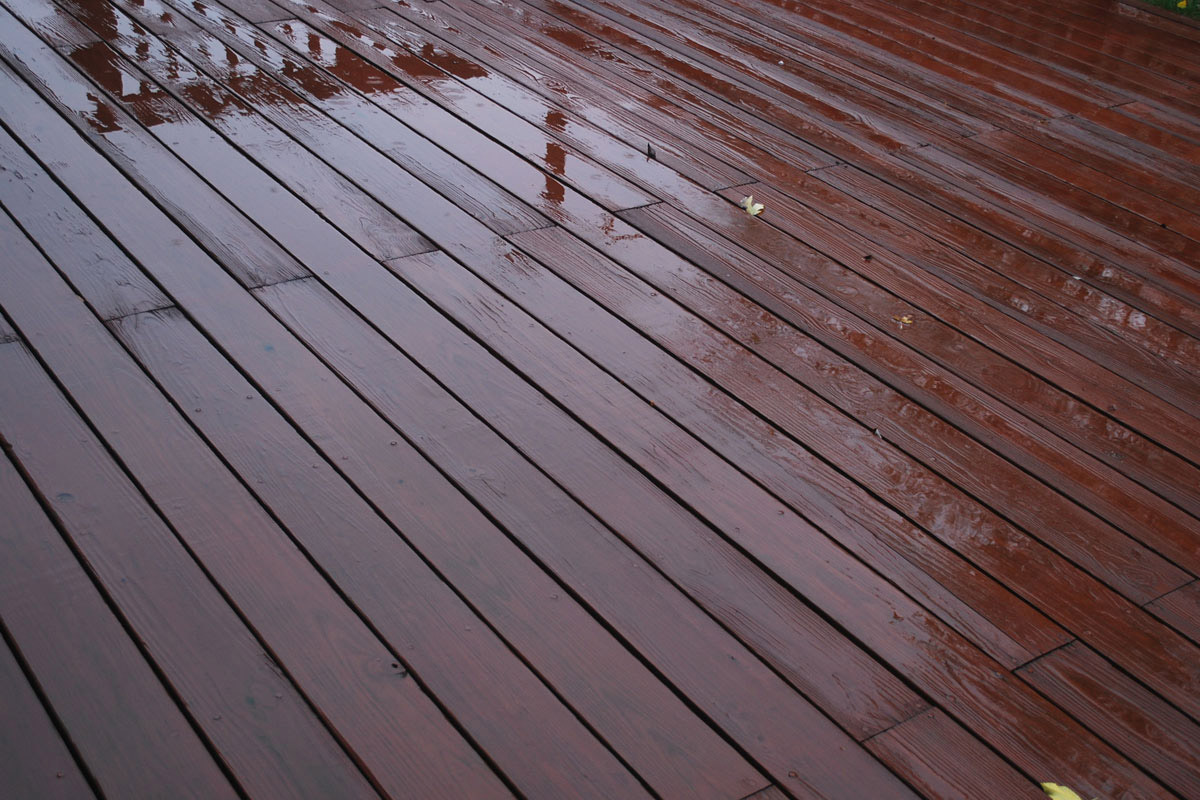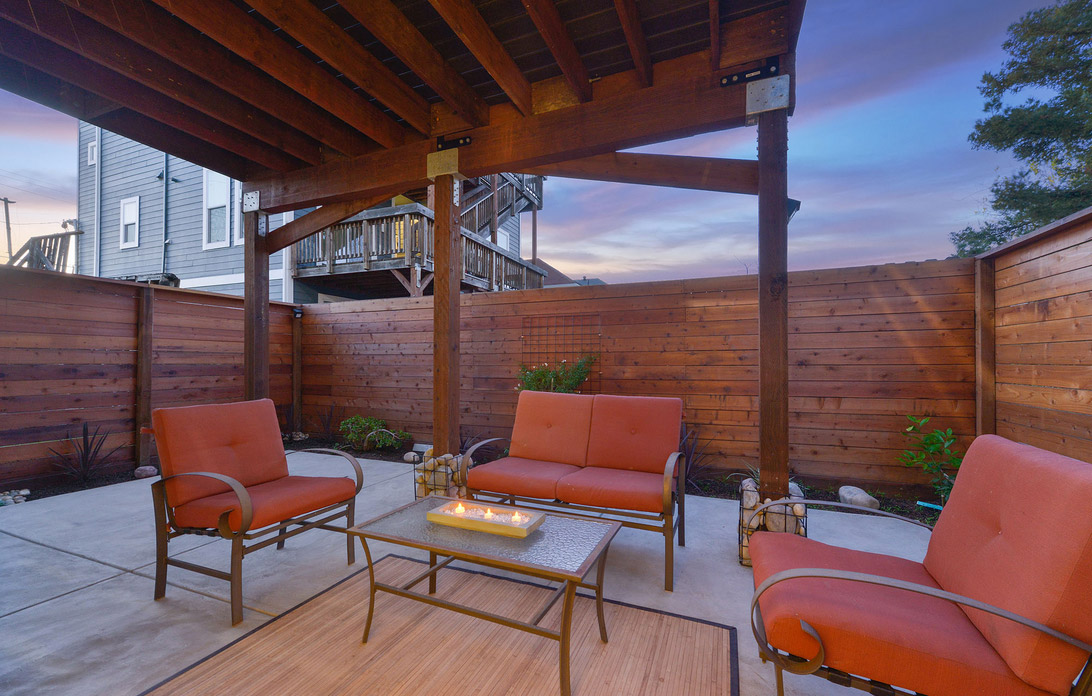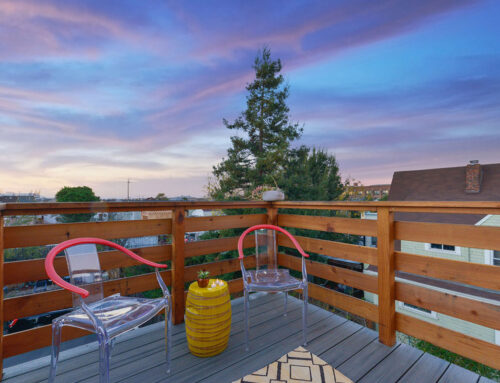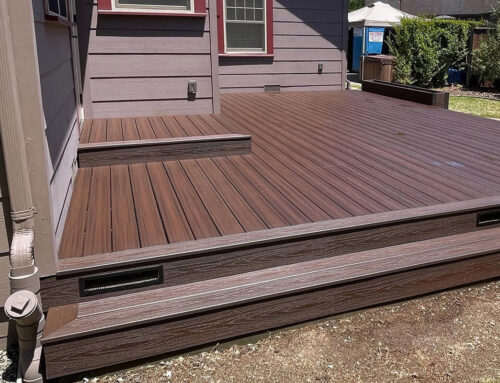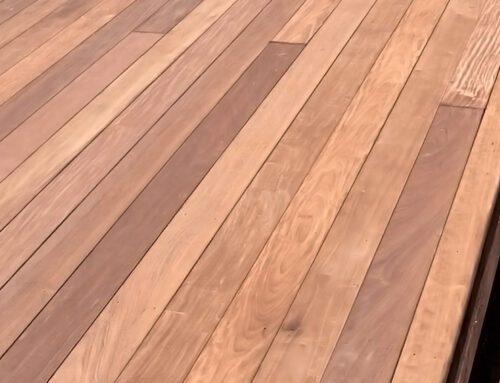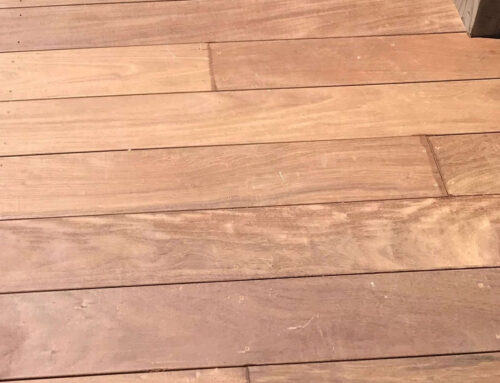Quality grades of cedarwood don’t need to be stained, even when used outdoors. The wood resists moisture and rot and will naturally weather into a greyish shade that many find beautiful. Still, some people prefer to stain cedar decking. You may want to stain it to change its color or maintain its original color. You may simply want to stain it to ensure it stays consistent, as aged cedar is blotchy. Staining can also have the benefit of improving longevity by protecting the wood from UV damage, reducing its swelling and shrinking and providing other benefits.
Transparent Stains
Just as they sound, transparent stains are see-through and will not change the color of your cedar decking. They do, however, help protect the decking from the sun, water, fungus, and other environmental concerns.
Semi-Transparent Stains
Semi-transparent stains are the right option if you want to add just a touch of color to your decking but not lose any of the natural wood look. You’ll see the texture through these stains. You can add a semi-transparent stain to weathered cedar to bring back some of its original reddish color.
Opaque, Solid Color Stains
While some people may balk at the idea of putting a solid color stain on cedar, it’s a possibility. The solid color will hide most (but not all) of the wood grain but will also make the wood a deep, rich color. Don’t let people shame you out of choosing a solid color if you want to–it’s your deck. Although, you might want to choose a cheaper wood than cedar if this is the route you commit to.
See Our Work
Soto Bay Construction builds only the best decks, ADUs, and other large home improvement projects throughout the Bay Area. See our work or contact us today for a bid on your next project.
Bleaching Stains
If you were slightly upset that we would even mention adding a solid stain to cedar because you prefer that grey aged cedar look, then we have an option that will appeal to you. You can add a bleaching stain to young red cedar to speed up the aging process and get that grey look in three to six months. Using a stain to accomplish this will also make the grey more consistent.
Oil-Based or Acrylic
In general, stains will be made of either paraffin and oils or acrylic. Oil-based stains are a better option for you because they can penetrate woods of greater density, like cedar. Acrylic stains are a little easier on the environment, but you may find that you need to reapply them more often. If you’re looking to minimize maintenance on your deck, you may want to choose an oil-based stain.
Options You Shouldn’t Use
There are some stain options that we don’t recommend you use with cedar, including:
- Water sealer: Water sealer will keep out water, but it will also force the water to stay in a droplet on the wood’s surface. When this happens, the sun is magnified through the water. This will distort the color’s consistency as the cedar ages.
- Latex: Latex-based stains for a film on top of the wood, which flakes off over time.
While we have hopefully given you a general idea of what stain you’ll want to use on your cedar, you might still want to seek out a professional opinion on the specific kind you should try. If you’re looking for a local deck contractor in Fremont, Oakland, or anywhere in between, we’re happy to help. Learn more about our deck building services or call today to speak with a specialist.


